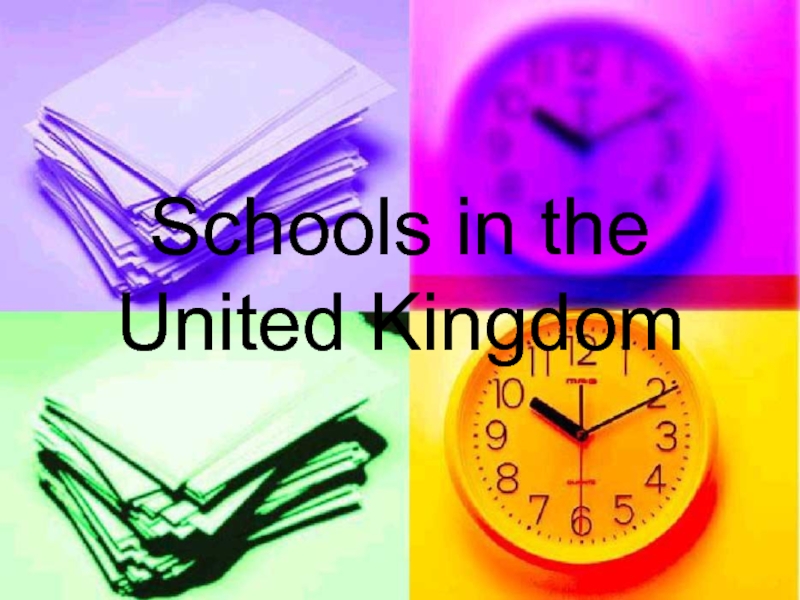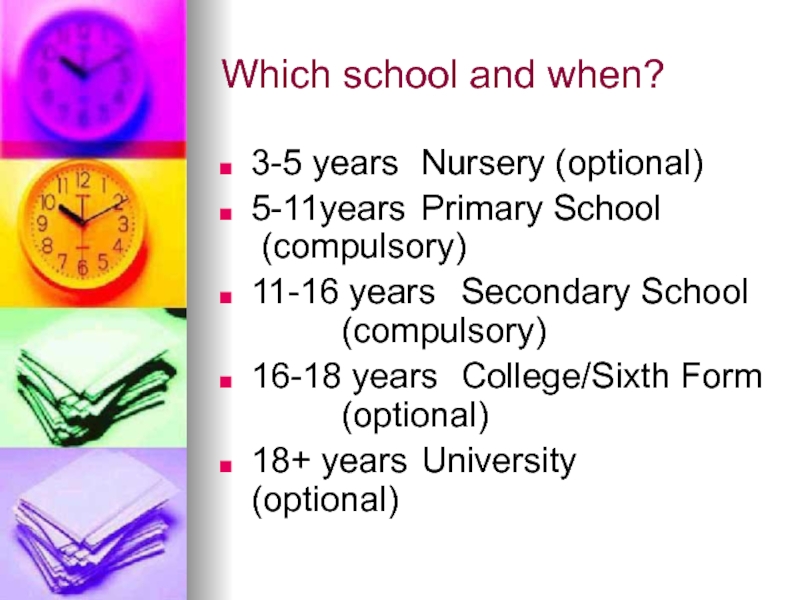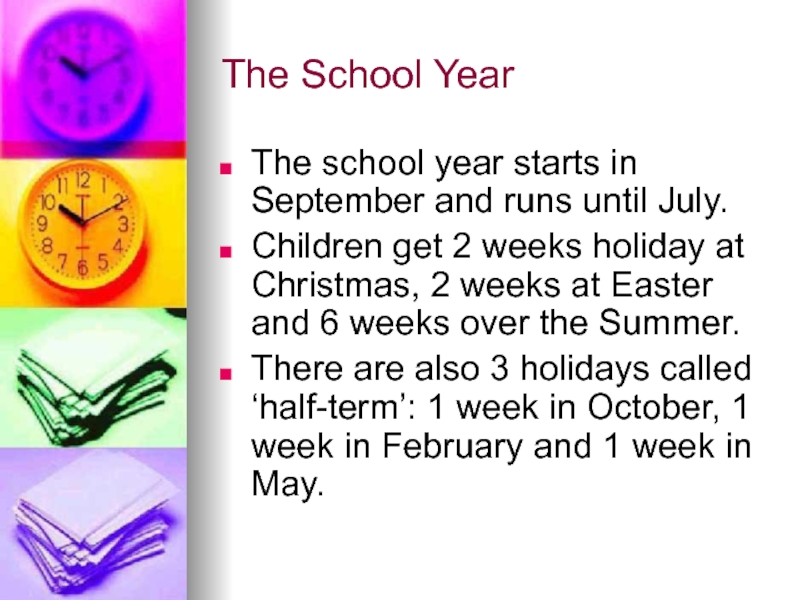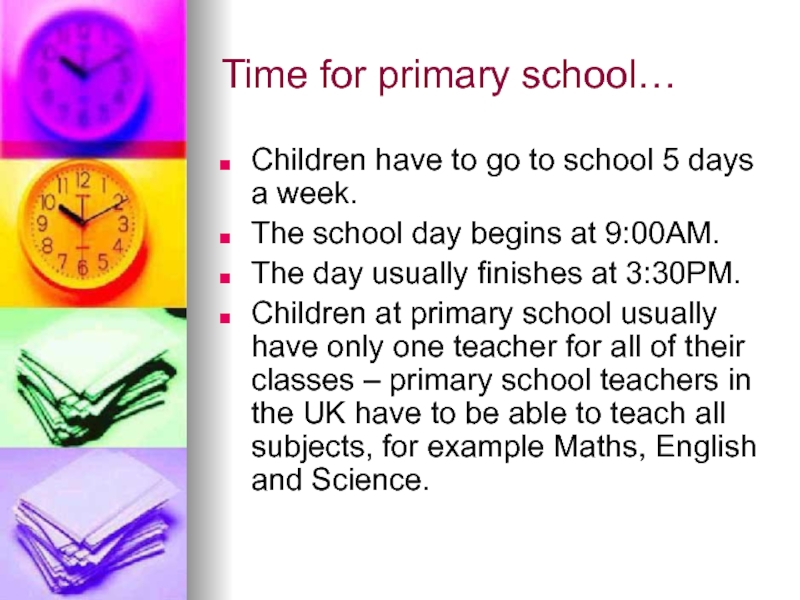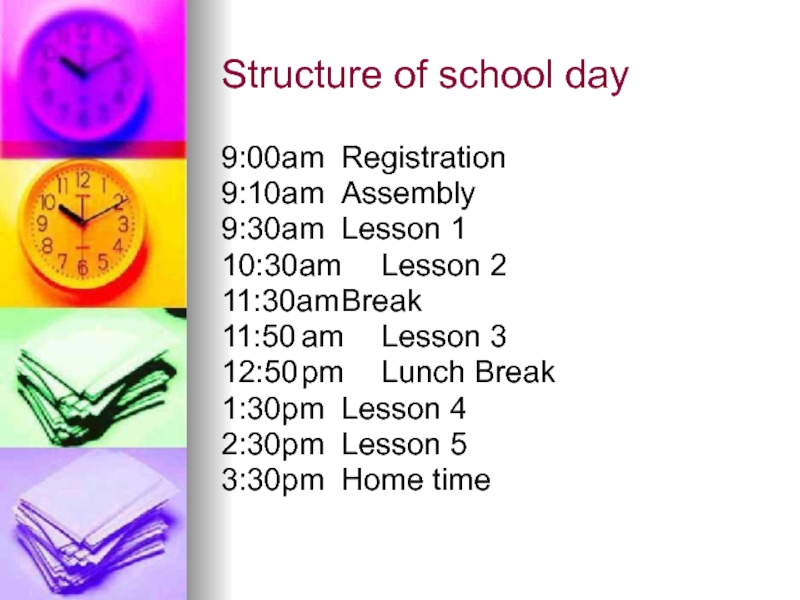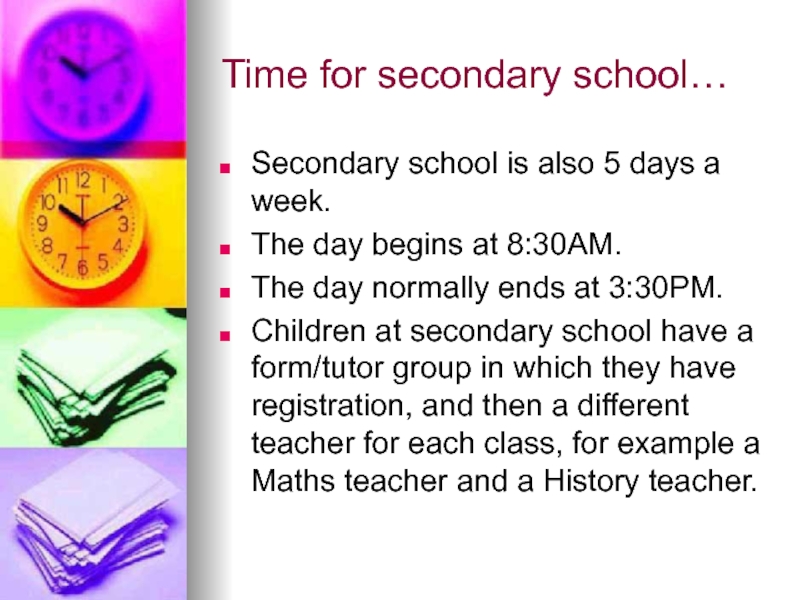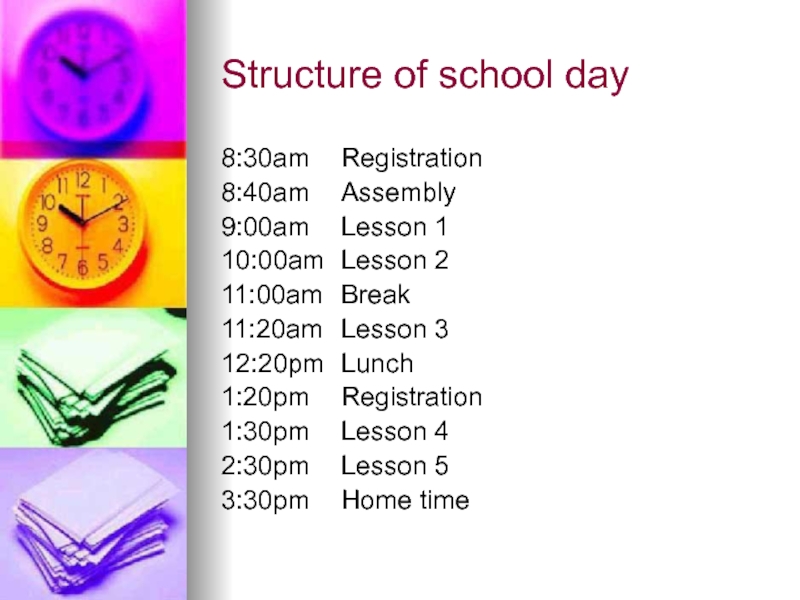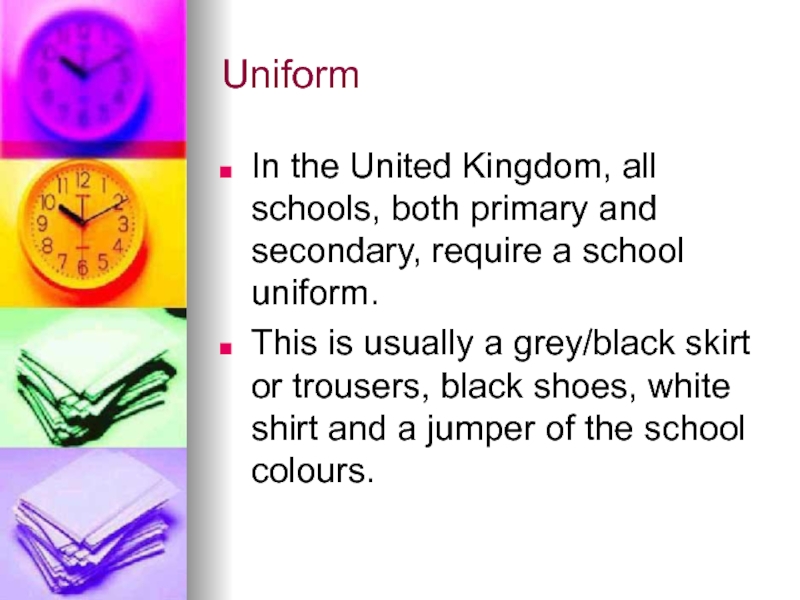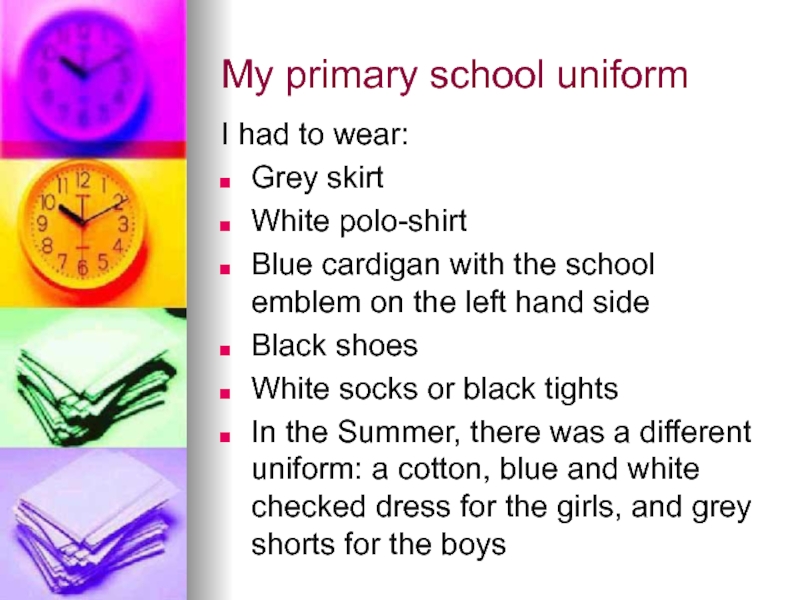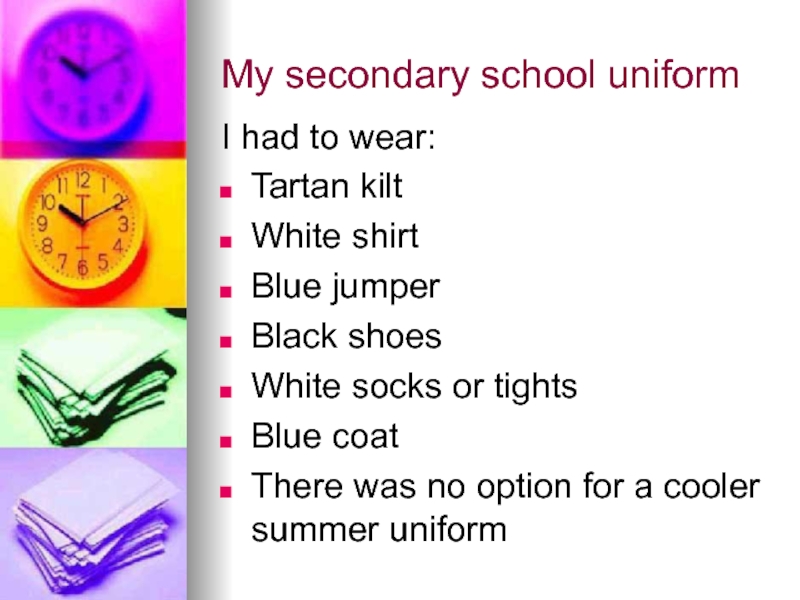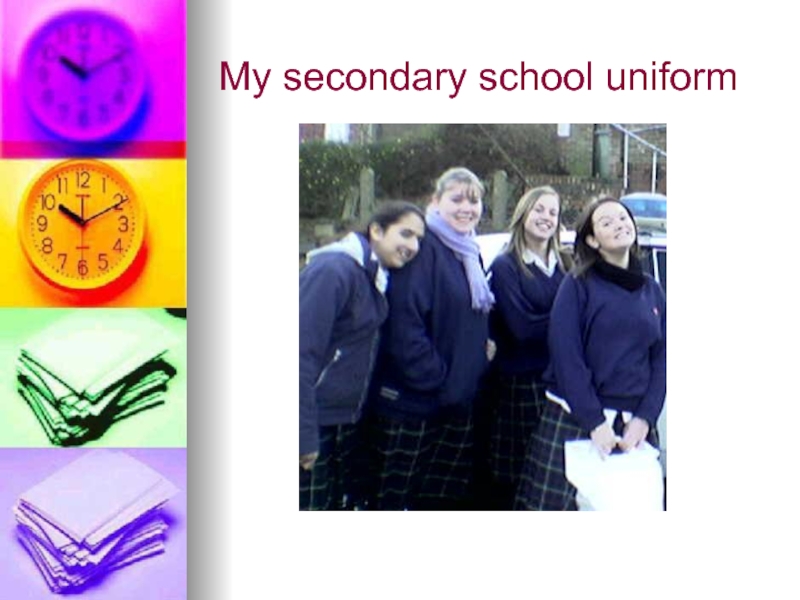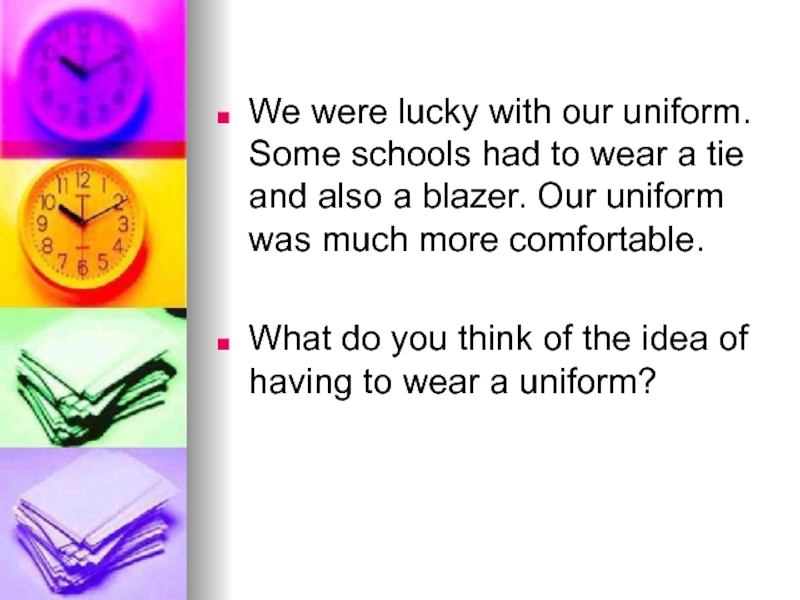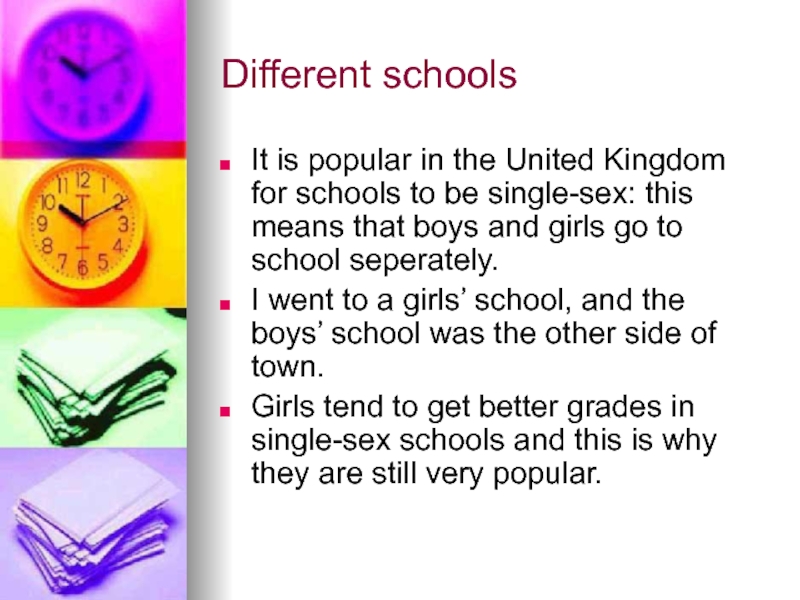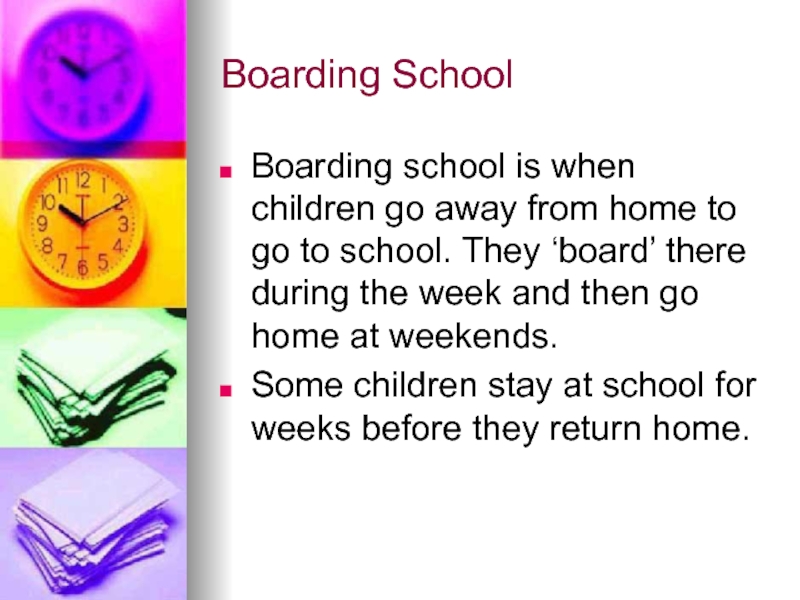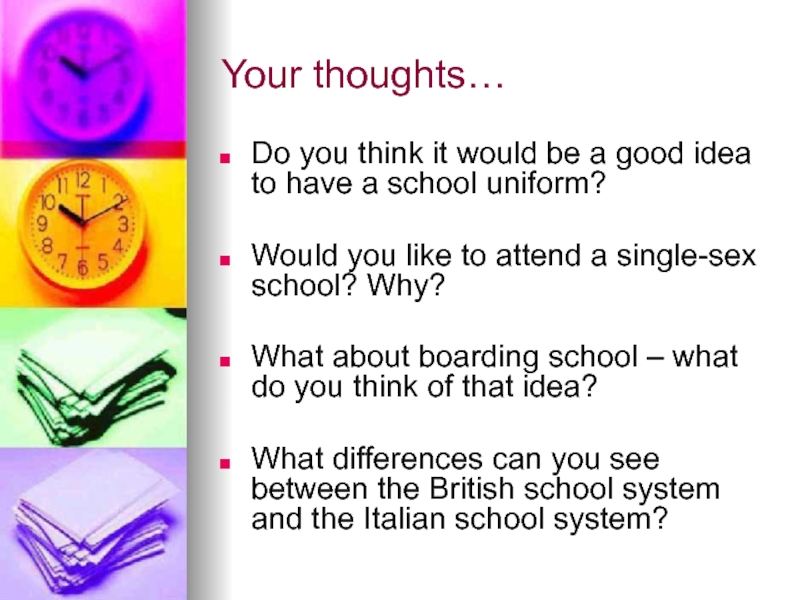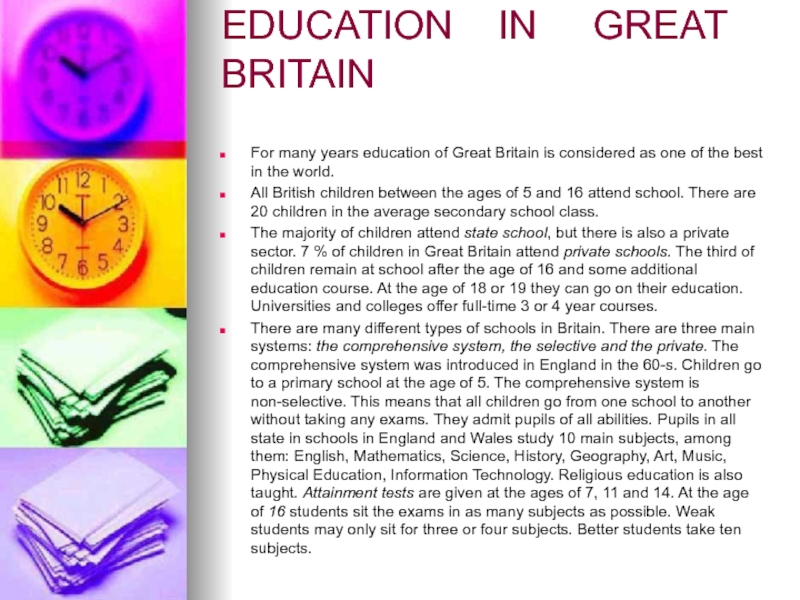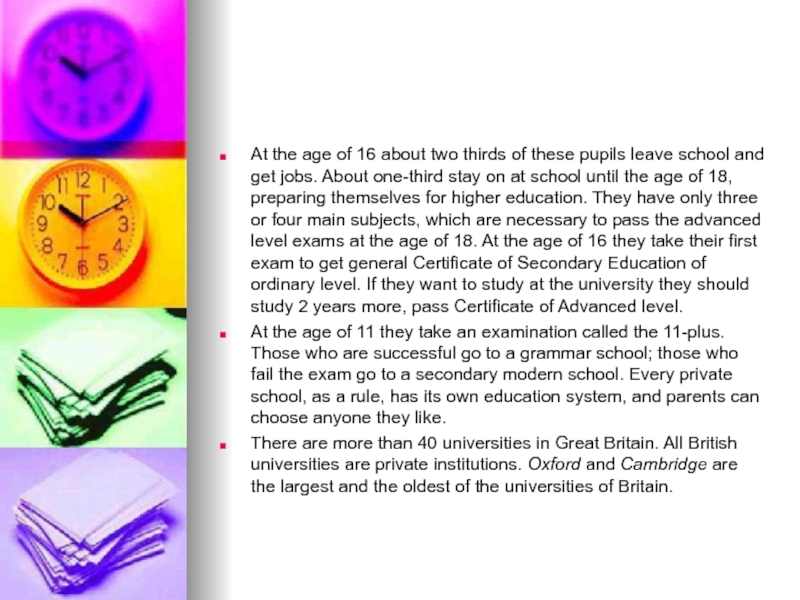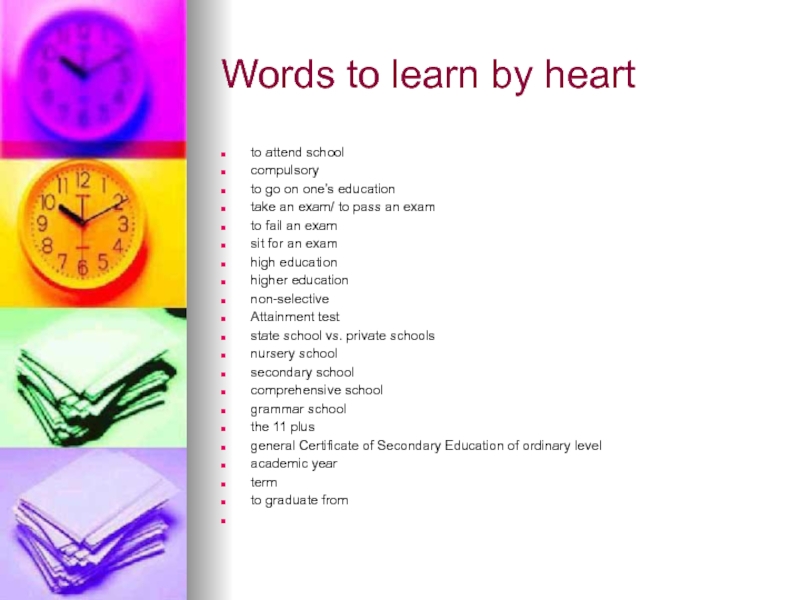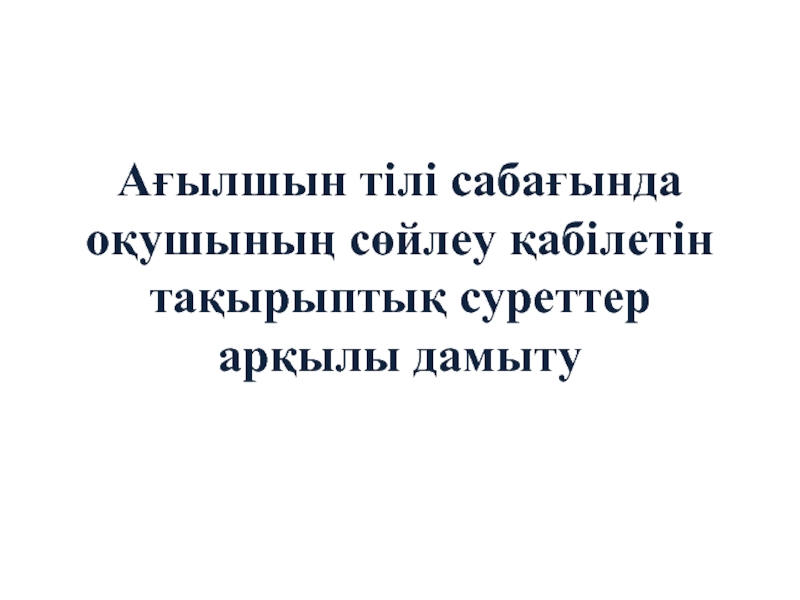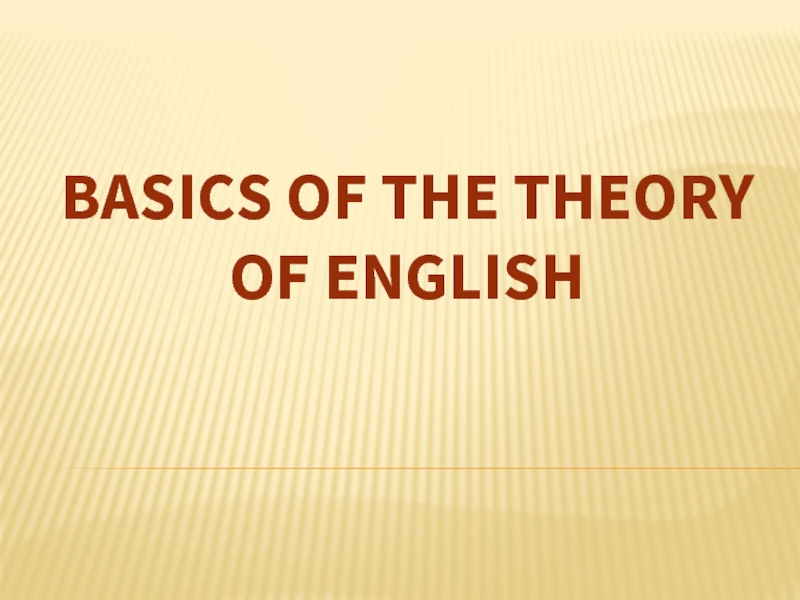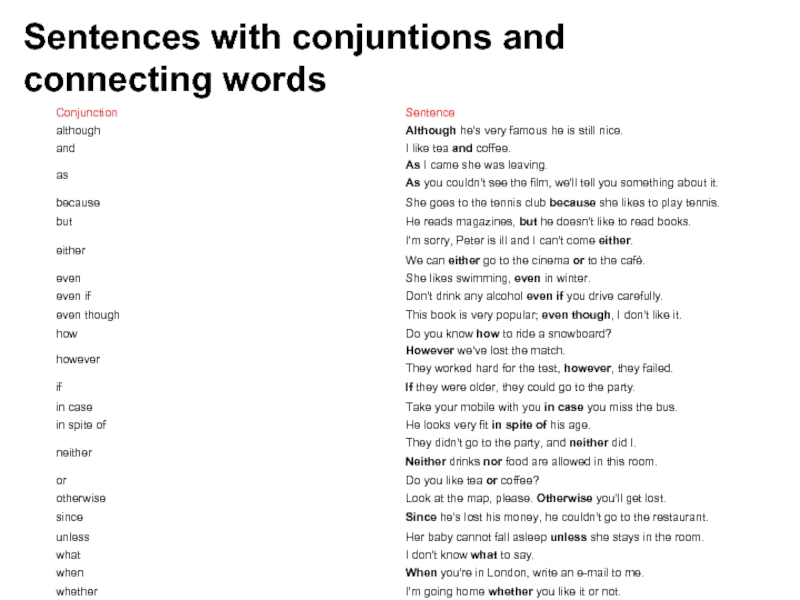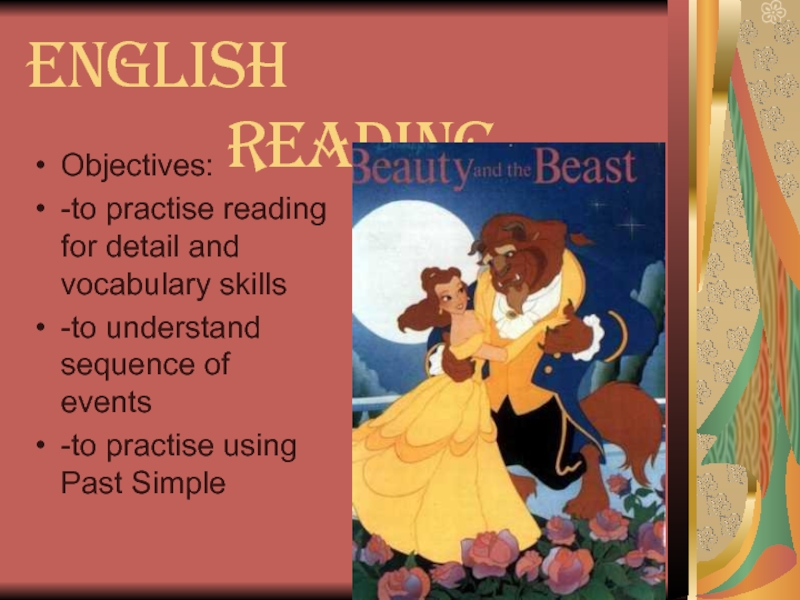- Главная
- Разное
- Дизайн
- Бизнес и предпринимательство
- Аналитика
- Образование
- Развлечения
- Красота и здоровье
- Финансы
- Государство
- Путешествия
- Спорт
- Недвижимость
- Армия
- Графика
- Культурология
- Еда и кулинария
- Лингвистика
- Английский язык
- Астрономия
- Алгебра
- Биология
- География
- Детские презентации
- Информатика
- История
- Литература
- Маркетинг
- Математика
- Медицина
- Менеджмент
- Музыка
- МХК
- Немецкий язык
- ОБЖ
- Обществознание
- Окружающий мир
- Педагогика
- Русский язык
- Технология
- Физика
- Философия
- Химия
- Шаблоны, картинки для презентаций
- Экология
- Экономика
- Юриспруденция
Schools in the United Kingdom презентация
Содержание
- 1. Schools in the United Kingdom
- 2. Which school and when? 3-5 years Nursery (optional)
- 3. The School Year The school year starts
- 4. Time for primary school… Children have to
- 5. Structure of school day 9:00am Registration 9:10am
- 6. Time for secondary school… Secondary school is
- 7. Structure of school day 8:30am Registration 8:40am Assembly 9:00am Lesson
- 8. Uniform In the United Kingdom, all schools,
- 9. My primary school uniform I had to
- 10. My secondary school uniform I had to
- 11. My secondary school uniform
- 12. We were lucky with our uniform. Some
- 13. Different schools It is popular in the
- 14. Boarding School Boarding school is when children
- 15. Your thoughts… Do you think it would
- 16. EDUCATION IN GREAT BRITAIN
- 17. At the age of 16 about
- 18. Words to learn by heart to attend
Слайд 2Which school and when?
3-5 years Nursery (optional)
5-11years Primary School (compulsory)
11-16 years Secondary School (compulsory)
16-18
years College/Sixth Form (optional)
18+ years University (optional)
18+ years University (optional)
Слайд 3The School Year
The school year starts in September and runs until
July.
Children get 2 weeks holiday at Christmas, 2 weeks at Easter and 6 weeks over the Summer.
There are also 3 holidays called ‘half-term’: 1 week in October, 1 week in February and 1 week in May.
Children get 2 weeks holiday at Christmas, 2 weeks at Easter and 6 weeks over the Summer.
There are also 3 holidays called ‘half-term’: 1 week in October, 1 week in February and 1 week in May.
Слайд 4Time for primary school…
Children have to go to school 5 days
a week.
The school day begins at 9:00AM.
The day usually finishes at 3:30PM.
Children at primary school usually have only one teacher for all of their classes – primary school teachers in the UK have to be able to teach all subjects, for example Maths, English and Science.
The school day begins at 9:00AM.
The day usually finishes at 3:30PM.
Children at primary school usually have only one teacher for all of their classes – primary school teachers in the UK have to be able to teach all subjects, for example Maths, English and Science.
Слайд 5Structure of school day
9:00am Registration
9:10am Assembly
9:30am Lesson 1
10:30am Lesson 2
11:30am Break
11:50 am Lesson 3
12:50 pm Lunch
Break
1:30pm Lesson 4
2:30pm Lesson 5
3:30pm Home time
1:30pm Lesson 4
2:30pm Lesson 5
3:30pm Home time
Слайд 6Time for secondary school…
Secondary school is also 5 days a week.
The
day begins at 8:30AM.
The day normally ends at 3:30PM.
Children at secondary school have a form/tutor group in which they have registration, and then a different teacher for each class, for example a Maths teacher and a History teacher.
The day normally ends at 3:30PM.
Children at secondary school have a form/tutor group in which they have registration, and then a different teacher for each class, for example a Maths teacher and a History teacher.
Слайд 7Structure of school day
8:30am Registration
8:40am Assembly
9:00am Lesson 1
10:00am Lesson 2
11:00am Break
11:20am Lesson 3
12:20pm Lunch
1:20pm Registration
1:30pm Lesson 4
2:30pm Lesson 5
3:30pm Home time
Слайд 8Uniform
In the United Kingdom, all schools, both primary and secondary, require
a school uniform.
This is usually a grey/black skirt or trousers, black shoes, white shirt and a jumper of the school colours.
This is usually a grey/black skirt or trousers, black shoes, white shirt and a jumper of the school colours.
Слайд 9My primary school uniform
I had to wear:
Grey skirt
White polo-shirt
Blue cardigan with
the school emblem on the left hand side
Black shoes
White socks or black tights
In the Summer, there was a different uniform: a cotton, blue and white checked dress for the girls, and grey shorts for the boys
Black shoes
White socks or black tights
In the Summer, there was a different uniform: a cotton, blue and white checked dress for the girls, and grey shorts for the boys
Слайд 10My secondary school uniform
I had to wear:
Tartan kilt
White shirt
Blue jumper
Black shoes
White
socks or tights
Blue coat
There was no option for a cooler summer uniform
Blue coat
There was no option for a cooler summer uniform
Слайд 12We were lucky with our uniform. Some schools had to wear
a tie and also a blazer. Our uniform was much more comfortable.
What do you think of the idea of having to wear a uniform?
What do you think of the idea of having to wear a uniform?
Слайд 13Different schools
It is popular in the United Kingdom for schools to
be single-sex: this means that boys and girls go to school seperately.
I went to a girls’ school, and the boys’ school was the other side of town.
Girls tend to get better grades in single-sex schools and this is why they are still very popular.
I went to a girls’ school, and the boys’ school was the other side of town.
Girls tend to get better grades in single-sex schools and this is why they are still very popular.
Слайд 14Boarding School
Boarding school is when children go away from home to
go to school. They ‘board’ there during the week and then go home at weekends.
Some children stay at school for weeks before they return home.
Some children stay at school for weeks before they return home.
Слайд 15Your thoughts…
Do you think it would be a good idea to
have a school uniform?
Would you like to attend a single-sex school? Why?
What about boarding school – what do you think of that idea?
What differences can you see between the British school system and the Italian school system?
Would you like to attend a single-sex school? Why?
What about boarding school – what do you think of that idea?
What differences can you see between the British school system and the Italian school system?
Слайд 16EDUCATION IN GREAT BRITAIN
For many years education of
Great Britain is considered as one of the best in the world.
All British children between the ages of 5 and 16 attend school. There are 20 children in the average secondary school class.
The majority of children attend state school, but there is also a private sector. 7 % of children in Great Britain attend private schools. The third of children remain at school after the age of 16 and some additional education course. At the age of 18 or 19 they can go on their education. Universities and colleges offer full-time 3 or 4 year courses.
There are many different types of schools in Britain. There are three main systems: the comprehensive system, the selective and the private. The comprehensive system was introduced in England in the 60-s. Children go to a primary school at the age of 5. The comprehensive system is non-selective. This means that all children go from one school to another without taking any exams. They admit pupils of all abilities. Pupils in all state in schools in England and Wales study 10 main subjects, among them: English, Mathematics, Science, History, Geography, Art, Music, Physical Education, Information Technology. Religious education is also taught. Attainment tests are given at the ages of 7, 11 and 14. At the age of 16 students sit the exams in as many subjects as possible. Weak students may only sit for three or four subjects. Better students take ten subjects.
All British children between the ages of 5 and 16 attend school. There are 20 children in the average secondary school class.
The majority of children attend state school, but there is also a private sector. 7 % of children in Great Britain attend private schools. The third of children remain at school after the age of 16 and some additional education course. At the age of 18 or 19 they can go on their education. Universities and colleges offer full-time 3 or 4 year courses.
There are many different types of schools in Britain. There are three main systems: the comprehensive system, the selective and the private. The comprehensive system was introduced in England in the 60-s. Children go to a primary school at the age of 5. The comprehensive system is non-selective. This means that all children go from one school to another without taking any exams. They admit pupils of all abilities. Pupils in all state in schools in England and Wales study 10 main subjects, among them: English, Mathematics, Science, History, Geography, Art, Music, Physical Education, Information Technology. Religious education is also taught. Attainment tests are given at the ages of 7, 11 and 14. At the age of 16 students sit the exams in as many subjects as possible. Weak students may only sit for three or four subjects. Better students take ten subjects.
Слайд 17
At the age of 16 about two thirds of these pupils
leave school and get jobs. About one-third stay on at school until the age of 18, preparing themselves for higher education. They have only three or four main subjects, which are necessary to pass the advanced level exams at the age of 18. At the age of 16 they take their first exam to get general Certificate of Secondary Education of ordinary level. If they want to study at the university they should study 2 years more, pass Certificate of Advanced level.
At the age of 11 they take an examination called the 11-plus. Those who are successful go to a grammar school; those who fail the exam go to a secondary modern school. Every private school, as a rule, has its own education system, and parents can choose anyone they like.
There are more than 40 universities in Great Britain. All British universities are private institutions. Oxford and Cambridge are the largest and the oldest of the universities of Britain.
At the age of 11 they take an examination called the 11-plus. Those who are successful go to a grammar school; those who fail the exam go to a secondary modern school. Every private school, as a rule, has its own education system, and parents can choose anyone they like.
There are more than 40 universities in Great Britain. All British universities are private institutions. Oxford and Cambridge are the largest and the oldest of the universities of Britain.
Слайд 18Words to learn by heart
to attend school
compulsory
to go on one’s education
take
an exam/ to pass an exam
to fail an exam
sit for an exam
high education
higher education
non-selective
Attainment test
state school vs. private schools
nursery school
secondary school
comprehensive school
grammar school
the 11 plus
general Certificate of Secondary Education of ordinary level
academic year
term
to graduate from
to fail an exam
sit for an exam
high education
higher education
non-selective
Attainment test
state school vs. private schools
nursery school
secondary school
comprehensive school
grammar school
the 11 plus
general Certificate of Secondary Education of ordinary level
academic year
term
to graduate from
